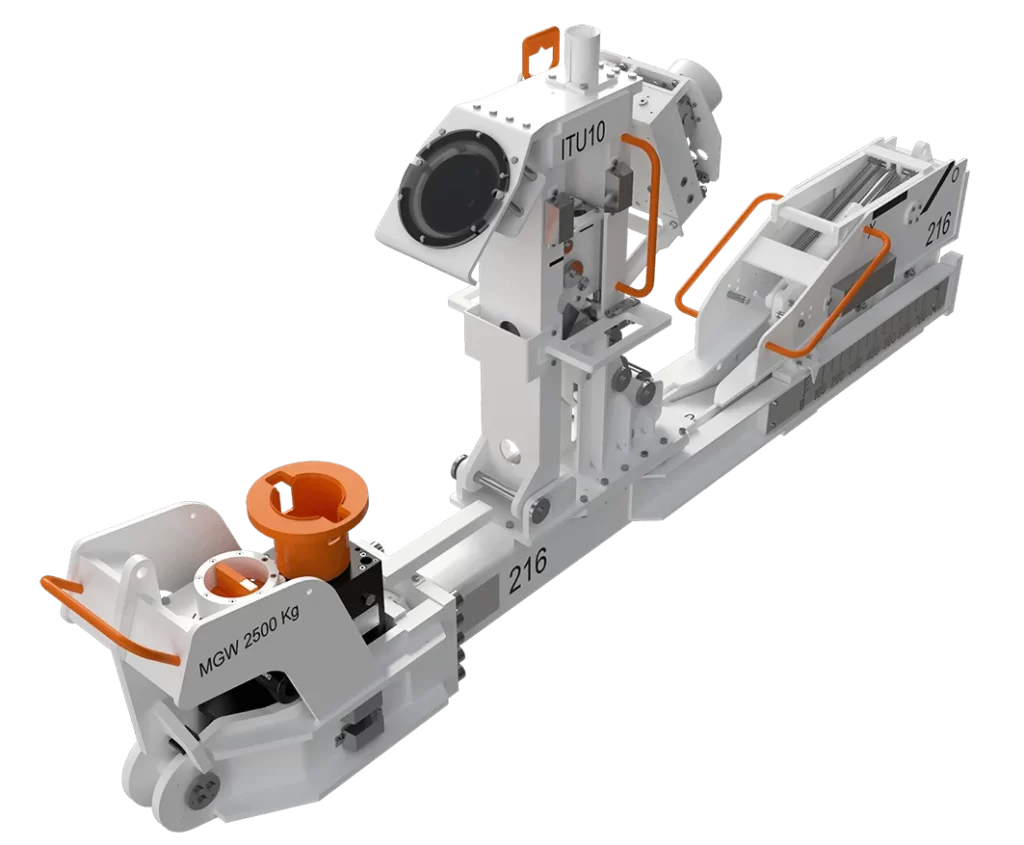BOP Tethering
Safeguarding subsea wellheads
With SubseaDesign's BOP tethering system the cyclic loads that occur on the subsea wellhead during drilling operations, potentially causing fatigue failure of the wellhead, are drastically reduced.
SubseaDesign has engineered and delivered BOP tethering systems since 2014:
- A large number of projects completed. More than 260 subsea wellheads protected using SubseaDesign equipment.
- More than 50 foundation structures (suction anchors and clump weights) designed and delivered
- Totally 156 rope tensioners in service
The BOP tethering system
SubseaDesign’s BOP Tethering System is a cost-effective and innovative solution that provides flexibility in adjusting the length of rope required for each tension line. This eliminates the need to have several lengths and reduces rigging time.
The heart of the system is the Linear Rope Tensioner (LRT), which can pull excess length of rope before being applied to final tension. The LRT can be equipped with two different configurations for initial tensioning. Either by lift line from surface (snatch block) or by a hydraulic operated tensioning unit mounted on the LRT. The latter is fully ROV operated and ideal for use in shallow water or on locations where it cannot be reached from the rig.
The LRT is equipped with a tension monitoring gauge. This allows the ROV to monitor and adjust tension as required. The LRT enables easy interfacing on all types of anchor points, both on templates and seabed. It also features a rotational range of 360 degree. Since the rope goes out of the LRT in upward direction, it will not be any clash with surrounding structures.
A BOP tethering system is typically designed and supported with the following:
- System drawings
- Efficiency analyses
- Geotechnical analyses
- BOP attachment points for rope arrangements
- Anchoring points (tension supports, clump weights, suction anchors etc.)
- Tensioning mechanism (rope tensioners)
- Detailed installation procedures and operational support
- Repair, maintenance, testing and storage of the equipment (test jig with load test up to 105 T)


Foundation Structures
The type of foundation structure is decided based on soil data and rope tension. Most common are suction anchors and clump weights

Adaptable to different BOP designs
A complete BOP tethering system consists of several LRT’s which are individually tethered to the BOP. The number of tethers and anchoring coordinates are decided based on analyses of the system to achieve the optimal BOP tethering efficiency. Other optimization factors are loads on the existing infrastructure, well properties and soil conditions. The system is adaptable to different BOP designs
The Rope Tensioner
The mechanism responsible for pretension the ropes is the Linear Rope Tensioner (LRT), designed with the ability to consistently retract excess rope length before the final tensioning process. This innovation introduces the flexibility to adjust the length of rope required for each tension line, eliminating the necessity for multiple adjustment lengths and consequently streamlining subsea rigging processes.
The LRT offers two distinct configurations for initial tensioning. The first involves utilizing a lift line from the surface through a snatch block, while the second employs a hydraulic-operated tensioning unit mounted directly on the LRT. The latter configuration is entirely remotely operated vehicle (ROV) controlled, making it particularly well-suited for applications in shallow water or locations inaccessible from the rig. This versatility enhances operational efficiency and expands the scope of applications for the Linear Rope Tensioner.
The integrated load monitoring system ensures that the remotely operated vehicle (ROV) can effectively monitor and adjust tension forces as needed. The Linear Rope Tensioner (LRT) facilitates seamless interfacing with various anchor points, whether on templates or the seabed, offering a rotational range of 360 degrees. Notably, the upward direction in which the rope exits the LRT mitigates any potential clashes with surrounding structures.
The BOP tethering system is comprised of multiple LRTs, each individually tethered to the Blowout Preventer (BOP). Determining the quantity and anchoring coordinates of the LRTs involves analysis of the system to optimize the system efficiency. Additional optimization considerations encompass loads on existing infrastructure, well properties, and soil conditions. Importantly, the system exhibits adaptability to different BOP designs, enhancing its versatility and applicability in various offshore scenarios.
Looking for more information on the Rope Tensioner ?







